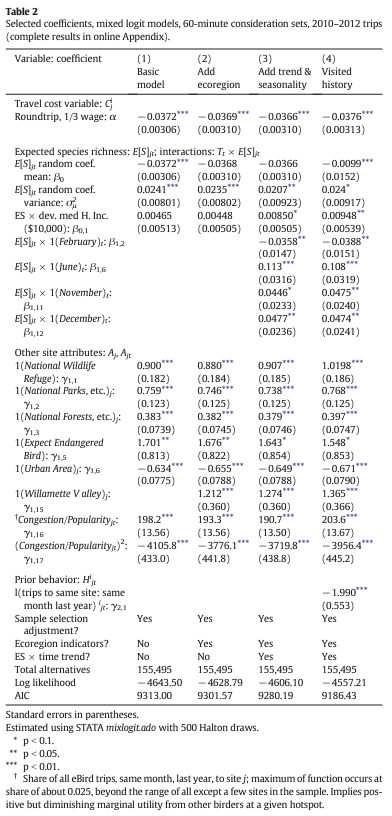The non-market value of birding sites and the marginal value of additional species: Biodiversity in a random utility model of site choice by eBird members

Abstract
The eBird database is the product of a huge citizen science project at the Cornell University Laboratory of Ornithology. Members report their birding excursions—both their destinations and the numbers and types of birds they observe on each trip. Based on home address information, we calculate travel costs for each birder for trips to alternative birding hotspots. We focus on the Pacific Northwest U.S. (Washington and Oregon states). Many birders are ``listers” who seek to maximize the cumulative number of species they have been able to see, and each hotspot is characterized by the number of bird species expected to be present. In a random utility model of destination site choice, we allow for seasonal as well as random heterogeneity in the marginal utility per bird species. For this population of birders, marginal WTP for an additional bird species is highest in June when birds are in their mating-season plumage (at more than $3 per species per trip). Total WTP for a birding outing also depends on other site attributes (including ecological management regime, the possible presence of endangered bird species, urban/rural location, ecological region and relative congestion/popularity). Evidence of variety-seeking can also be discerned in birders’ destination choices.